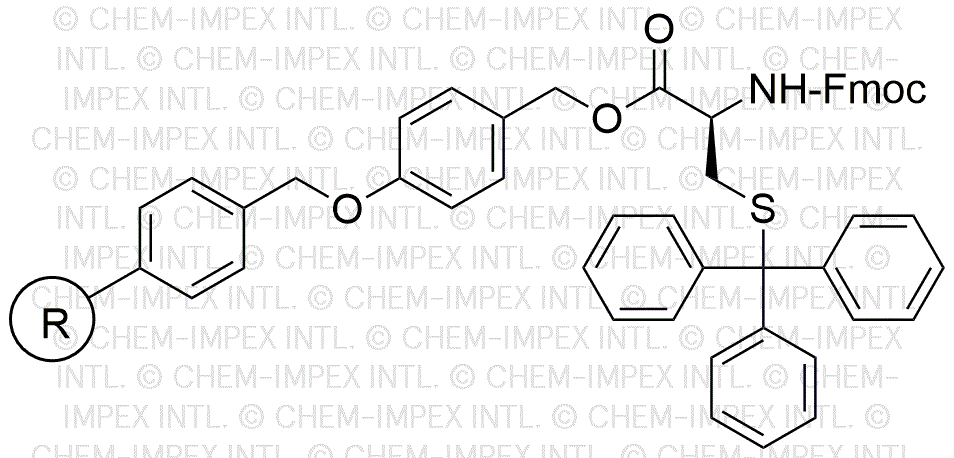Fmoc-S-trityl-L-cysteine 4-alkoxybenzyl alcohol is widely utilized in research focused on:
- Peptide Synthesis: This compound serves as a protecting group in the synthesis of peptides, allowing for selective functionalization of amino acids without unwanted reactions.
- Drug Development: It plays a crucial role in the design of novel pharmaceuticals, particularly in creating compounds that target specific biological pathways.
- Bioconjugation: The chemical is used to attach biomolecules to surfaces or other molecules, enhancing the development of biosensors and targeted drug delivery systems.
- Research in Cancer Therapeutics: Its unique properties allow researchers to explore new treatments by modifying existing compounds to improve efficacy and reduce side effects.
- Material Science: The compound is applied in the development of advanced materials, such as coatings and polymers, that require specific chemical functionalities for enhanced performance.
General Information
Properties
Safety and Regulations
Applications
Fmoc-S-trityl-L-cysteine 4-alkoxybenzyl alcohol is widely utilized in research focused on:
- Peptide Synthesis: This compound serves as a protecting group in the synthesis of peptides, allowing for selective functionalization of amino acids without unwanted reactions.
- Drug Development: It plays a crucial role in the design of novel pharmaceuticals, particularly in creating compounds that target specific biological pathways.
- Bioconjugation: The chemical is used to attach biomolecules to surfaces or other molecules, enhancing the development of biosensors and targeted drug delivery systems.
- Research in Cancer Therapeutics: Its unique properties allow researchers to explore new treatments by modifying existing compounds to improve efficacy and reduce side effects.
- Material Science: The compound is applied in the development of advanced materials, such as coatings and polymers, that require specific chemical functionalities for enhanced performance.
Documents
Safety Data Sheets (SDS)
The SDS provides comprehensive safety information on handling, storage, and disposal of the product.
Product Specification (PS)
The PS provides a comprehensive breakdown of the product’s properties, including chemical composition, physical state, purity, and storage requirements. It also details acceptable quality ranges and the product's intended applications.
Certificates of Analysis (COA)
Search for Certificates of Analysis (COA) by entering the products Lot Number. Lot and Batch Numbers can be found on a product’s label following the words ‘Lot’ or ‘Batch’.
*Catalog Number
*Lot Number
Certificates Of Origin (COO)
This COO confirms the country where the product was manufactured, and also details the materials and components used in it and whether it is derived from natural, synthetic, or other specific sources. This certificate may be required for customs, trade, and regulatory compliance.
*Catalog Number
*Lot Number
Safety Data Sheets (SDS)
The SDS provides comprehensive safety information on handling, storage, and disposal of the product.
DownloadProduct Specification (PS)
The PS provides a comprehensive breakdown of the product’s properties, including chemical composition, physical state, purity, and storage requirements. It also details acceptable quality ranges and the product's intended applications.
DownloadCertificates of Analysis (COA)
Search for Certificates of Analysis (COA) by entering the products Lot Number. Lot and Batch Numbers can be found on a product’s label following the words ‘Lot’ or ‘Batch’.
*Catalog Number
*Lot Number
Certificates Of Origin (COO)
This COO confirms the country where the product was manufactured, and also details the materials and components used in it and whether it is derived from natural, synthetic, or other specific sources. This certificate may be required for customs, trade, and regulatory compliance.


